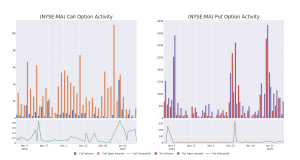Luton, Bedfordshire, United Kingdom, Nov. 13, 2024 (GLOBE NEWSWIRE) — Reed sensors are increasingly popular due to their simplicity, reliability, and low cost. These sensors also offer the advantage of zero power consumption, making them ideal for use in harsh environments. They are utilized across various sectors such as telecommunications, automotive, consumer electronics, safety and security, healthcare, construction, robotics, and automation.
A major driver for market growth is the widespread adoption of reed sensors in low-power metering applications. These sensors are used in products like electricity and heat meters, where they track the rotation of a magnet attached to a shaft. The meter converts each rotation into an electrical signal. In 2023, the global market for smart meters (which includes gas, water, and electricity meters) was valued at approximately $25 billion and is projected to grow at a CAGR of around 8-10% by 2028. The low power consumption of reed sensors makes them ideal for use in these types of systems, which require minimal energy to operate.
Access PDF Sample Report (Including Graphs, Charts & Figures) @
https://exactitudeconsultancy.com/reports/28213/reed-sensor-market/#request-a-sample
The rise of industrial automation, coupled with Industry 4.0, further accelerates the demand for reed sensors. For instance, global shipments of industrial robots reached around 500,000 units in 2021, and this number is expected to grow by 15% annually over the next few years. Reed sensors are essential in systems like hydraulic or pneumatic cylinders used for position sensing, thanks to their high-speed capabilities, reliability, and compatibility with programmable logic controllers (PLCs) and microcontrollers.
However, the reed sensor market faces challenges, particularly concerning the durability and reliability of reed switches. These switches are prone to breakage during installation, and issues such as contact bounce and limited operational lifespan due to their mechanical nature can hinder their use in some applications. Despite these drawbacks, the market for reed sensors is expected to expand steadily, with growth driven by their ability to perform well in low-power, harsh environments.
The automotive sector holds a significant share in the reed sensor market, driven by several factors:
- Rising Demand for Safety Features: As the number of light commercial vehicles increases and road accidents remain prevalent globally, there is a growing demand for safety features, especially in mid-level vehicles. Countries have implemented safety regulations, leading to the integration of advanced safety systems in cars, which include reed sensors. For instance, the global automotive safety systems market was valued at approximately $46 billion in 2023, with continued growth expected.
- Early Brake Sensing in Collision Avoidance: Reed sensors play a crucial role in passive safety systems by detecting brake application, alerting drivers about potential collisions. These sensors are used in collision avoidance systems, which are becoming standard in many vehicles to improve safety ratings and reduce accidents.
- Airbag Deployment: Modern vehicles are equipped with multiple airbags to protect both passengers and pedestrians during a crash. Reed sensors are used to detect the location of passengers and trigger airbags only in the appropriate areas. This ensures that airbags are deployed safely and effectively, contributing to both driver and passenger safety.
- Thermal Protection in Engine Compartments: Reed sensors are also used to detect high temperatures in vehicle engines. For example, thermal reed sensors can be mounted on engine blocks to monitor temperature, providing alerts on the instrument panel. When the temperature rises to a certain level, the reed sensor can activate the radiator fan to cool the engine, and when the temperature drops, it cuts off the supply to prevent unnecessary power consumption. This helps in preventing engine overheating, a critical safety concern.
- Increasing Vehicle Production: With the rise in vehicle production, especially light commercial vehicles, the demand for reed sensors is expected to increase. As of 2023, global vehicle production was estimated at 85 million units, and this number is projected to continue rising, pushing the demand for sensors that contribute to vehicle safety.
Report Link Click Here: https://exactitudeconsultancy.com/reports/28213/reed-sensor-market
The Asia-Pacific region plays a key role in the growth of the reed sensor market, driven by established industries in electronics and automotive manufacturing across countries like China, Taiwan, South Korea, and India.
- China: With major manufacturing hubs like Shanghai and Beijing, China is a dominant force in both the automotive and electronics industries. These regions lead the production of automobiles, communication equipment, and electronics, which significantly boosts the demand for reed sensors, particularly in automotive safety systems and smart technologies.
- South Korea: The rise of the smart home industry in South Korea further contributes to market expansion. Companies in South Korea have already deployed smart home systems in thousands of apartment units, such as in the Hillstate apartment clusters in Seoul and Pyeongtaek. This growing demand for smart home devices and remote monitoring systems is creating new opportunities for reed sensor applications in home security and automation.
- India: In India, government initiatives aimed at advancing robotics, particularly for military purposes, are driving demand for reed sensors. By 2023, India was preparing to deploy advanced robotic soldiers, with several robotics companies working on applications like robotic arms and visual indicators that rely on reed sensors. The increasing use of reed sensors in robotics, automation, and defense technologies will further fuel market growth in the region.
Reed Sensor Industry Overview
The reed sensor market is moderately competitive, with some major players holding substantial market share, while numerous local manufacturers are also producing these sensors. The competition within this market is expected to increase as new players and local companies enter the industry. Notable key players include Littlefuse, Standex Electronics, and PIC GmbH, who contribute significantly to the sector’s growth.
- April 2018: Standex Electronics, a prominent global electronics component manufacturer, showcased its diverse range of sensors, including reed sensors, at the Sensors Expo and Conference held in San Jose, California. The company highlighted its capabilities in providing both standard and custom sensor products, including reed switches, conductivity sensors, capacitive sensors, and Hall effect sensors. Standex also expressed plans to develop more advanced reed switch and sensor products in the future to cater to evolving market demands.
Use of reed sensors in automotive industry drives global reed sensor market
Reed sensors are integral to the smooth functioning of various vehicle systems, contributing to both reliability and safety across automotive applications. These sensors are widely used in many automotive components due to their low power consumption and long lifespan. Some of the key applications include:
- Sun Visors: Reed sensors are used to detect the position of sun visors, ensuring proper functionality.
- Early Brake Sensing: Reed sensors are deployed to alert drivers about potential collisions during brake application.
- Exhaust Emission Sensing: These sensors help monitor emissions, contributing to cleaner vehicles.
- Power Windows & Fuel Cap Positioning: Reed sensors track the position of power windows and the fuel cap for optimal performance.
- Anti-lock Braking System (ABS): Used in ABS to ensure the proper function of braking mechanisms.
- Coolant Flow & Fluid Level Monitoring: Reed sensors are used to monitor coolant flow and fluid levels, preventing engine damage.
- Accidental Airbag Deployment Prevention: Reed sensors ensure airbags deploy only when necessary.
- Cruise Control & Power Steering: These sensors help in controlling vehicle speed and steering, enhancing driving safety and convenience.
With the growing demand for advanced safety features and fuel efficiency, the automotive industry’s rapid expansion is a significant driver of the reed sensor market. These applications, along with the increasing demand for electric and autonomous vehicles, continue to foster the need for reliable sensor solutions.
Key Players in the Reed Sensor Industry
- Littelfuse, Inc.
- Standex Electronics, Inc.
- TE Connectivity
- HSI Sensing
- PIC GmbH
- Coto Technology
- Pickering Electronics
- Aleph America
- S.t.g. Germany GmbH
- Magnasphere
- Littelfuse, Inc.
- Standex Electronics, Inc. (Standex International Corporation)
- PIC GmbH
- Aleph America Corporation
- STG Germany GmbH
- Coto Technology
- Reed Switch Developments Corp.
- ZF Group
- Reed Relays and Electronics India Limited
- WIKA Instruments India Pvt. Ltd.
Key Developments in the Reed Sensor Market
- Standex Electronics (May 2024) – The company launched the MK33 SMD reed switch series, optimized for switching high power in a compact form. This series provides improved performance in various industries, including automotive.
- Standex Electronics (February 2024) – Standex completed the acquisition of Sanyu, a strategic move aimed at expanding its reed sensor technology portfolio, particularly for applications in transportation and automotive sectors.
- Littelfuse (October 2024) – Littelfuse introduced the RCMP20 Residual Current Monitor Series designed for EV charging stations. This product enhances safety and performance with a large current transformer aperture and improved thermal management.
- TE Connectivity (October 2024) – TE Connectivity announced advancements in reed sensor integration for smart home systems, enhancing security and automation. These sensors are also being adapted for healthcare applications.
- Littelfuse (July 2024) – Littelfuse launched a new series of mini reed sensors designed for lower power consumption, enhancing their applicability in automotive and consumer electronics.
Segmentation Analysis of the Reed Sensor Market
By Mounting Type:
- Panel Mount
- Surface Mount
- Thread Mount
- Screw Mount
- Others
By Contact Position:
By Industry Vertical:
- Automotive
- Electronics & Communication
- Healthcare
- Industrial
- Construction & Security
- Others
By Region:
- North America
- Europe
- Germany
- United Kingdom
- France
- Italy
- Rest of Europe
- Asia-Pacific
- China
- Japan
- India
- South Korea
- Rest of Asia-Pacific
- Rest of the World
- Latin America
- Middle-East & Africa
Get a Sample PDF Brochure:
https://exactitudeconsultancy.com/reports/28213/reed-sensor-market/#request-a-sample
Related Reports:
Plastic Optic Fibers Market
https://exactitudeconsultancy.com/reports/711/plastic-optic-fibers-market/
The Global Plastic Optic Fibers market is expected to grow at 7.9% CAGR from 2021 to 2026. It is expected to reach above USD 4.5 billion by 2026 from USD 3 billion in 2021.
Facial Recognition Market
https://exactitudeconsultancy.com/reports/1391/facial-recognition-market/
The Global Facial Recognition Market was valued at USD 3 billion in 2019, and it is expected to reach a value of USD 13 billion by 2028, registering a CAGR of 17% over the forecast period, 2020 – 2028.
Microcontrollers Market
https://exactitudeconsultancy.com/reports/1976/microcontrollers-market/
The Global Microcontrollers Market is expected to grow at more than 8.1% CAGR from 2019 to 2028. It is expected to reach above USD 33.2 billion by 2028 from USD 17.3 billion in 2019.
Natural Language Processing Market
https://exactitudeconsultancy.com/reports/1117/natural-language-processing-market/
The global natural language processing market was valued at USD 11 billion and is anticipated to grow at a CAGR of 20% to reach USD 49 billion by 2028.
Network as a service market
https://exactitudeconsultancy.com/reports/2159/network-as-a-service-market/
The global network as a service market size is estimated to be valued at USD 13.7 billion in 2021 and is projected to reach USD 63.1 billion by 2028, recording a CAGR of 24.6%.
Industry 4.0 Market
https://exactitudeconsultancy.com/reports/1789/industry-4-0-market/
The Global Industry 4.0 Market is expected to grow at more than 26% CAGR from 2019 to 2026. It is expected to reach above USD 305 billion by 2026 from a little above USD 68 billion in 2019.
Smart Factory Market
https://exactitudeconsultancy.com/reports/2058/smart-factory-market/
The global smart factory market is expected to grow at 10.5% CAGR from 2019 to 2028. It is expected to reach above USD 160.1 billion by 2028 from USD 65.2 billion in 2019.
Spectrum Analyzers Market
https://exactitudeconsultancy.com/reports/2920/spectrum-analyzers-market/
The global spectrum analyzers market size is estimated to be valued at USD 1,704.98 million in 2020 and is projected to reach USD 3214.53 million by 2029, recording a CAGR of 7.3%.
Insurance Analytics Market
https://exactitudeconsultancy.com/reports/2198/insurance-analytics-market/
The global insurance analytics market is projected to reach USD 25.04 Billion by 2028 from USD 8.30 Billion in 2020, at a CAGR of 14.8% from 2021 to 2028.
Private Wireless Networks Market
https://exactitudeconsultancy.com/reports/2585/private-wireless-networks-market/
The global Private Wireless Networks Market is expected to grow at 18% CAGR from 2020 to 2029. It is expected to reach above USD 80 billion by 2029 from USD 18 billion in 2020.
Edge Analytics Market
https://exactitudeconsultancy.com/reports/1219/edge-analytics-market/
The Edge Analytics Market size is estimated to grow from USD 3.35 billion in 2019 to USD 14.87 billion by 2028, at an estimated CAGR of 18% from 2019 to 2028.
Mobile and Wireless Backhaul Market
https://exactitudeconsultancy.com/reports/2113/mobile-and-wireless-backhaul-market/
The Global mobile and wireless backhaul market is expected to grow at 9.6 CAGR from 2019 to 2028. It is expected to reach above USD 16.8 billion by 2028 from USD 10.6 billion in 2019.

Irfan Tamboli (Head of Sales) Phone: + 1704 266 3234 Email: sales@exactitudeconsultancy.com
© 2024 Benzinga.com. Benzinga does not provide investment advice. All rights reserved.



